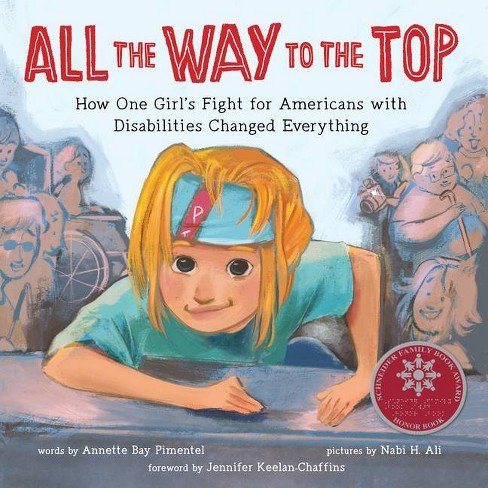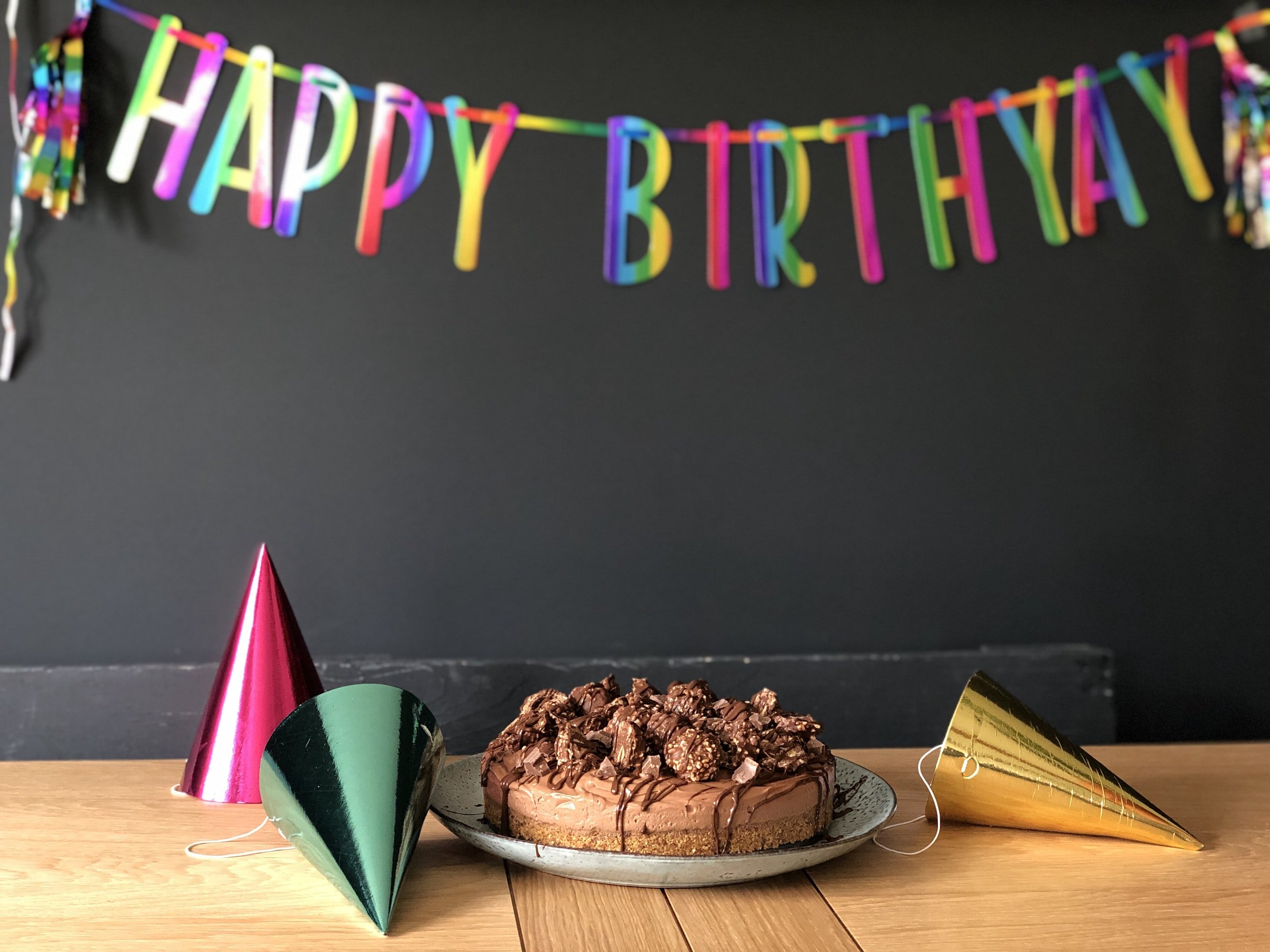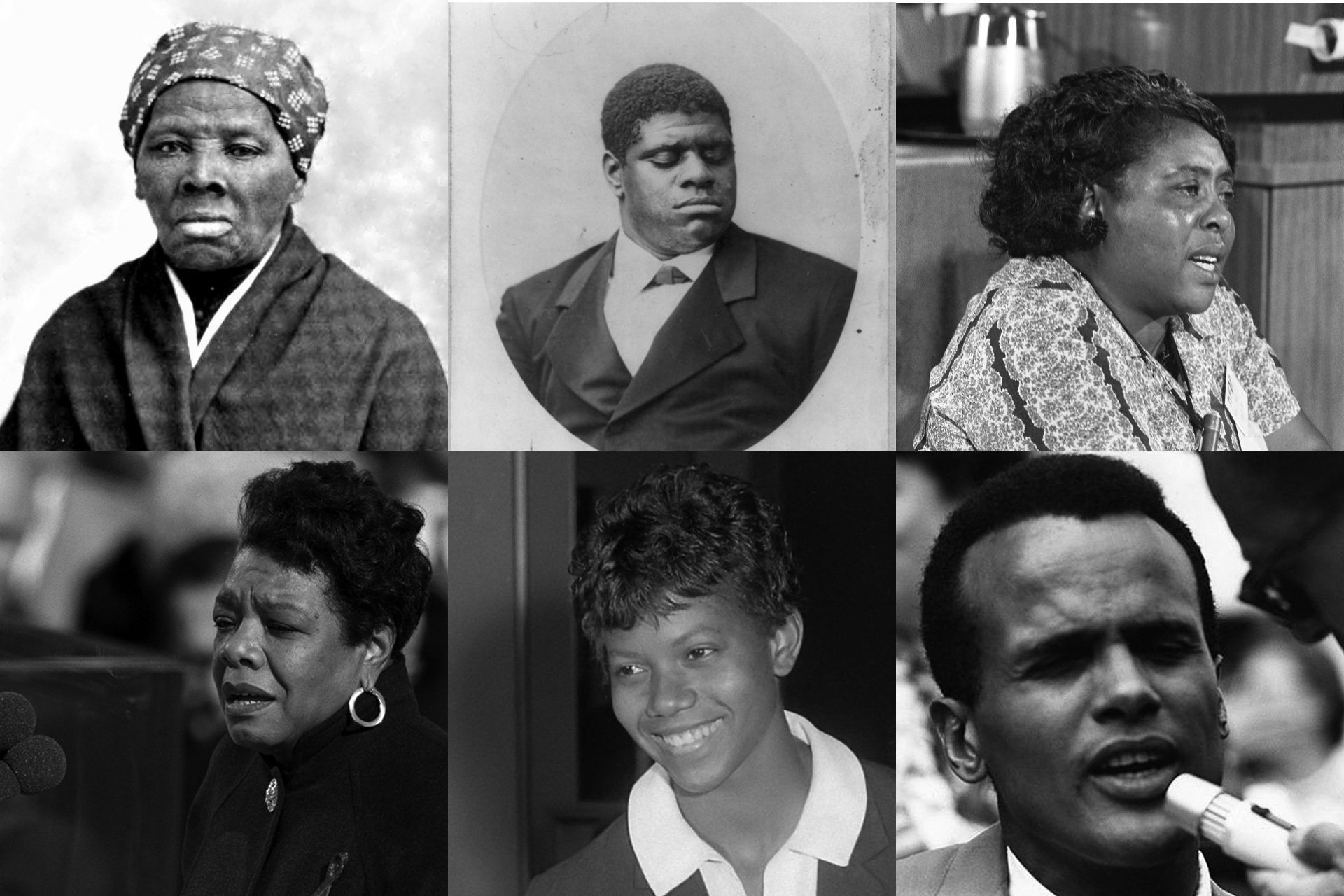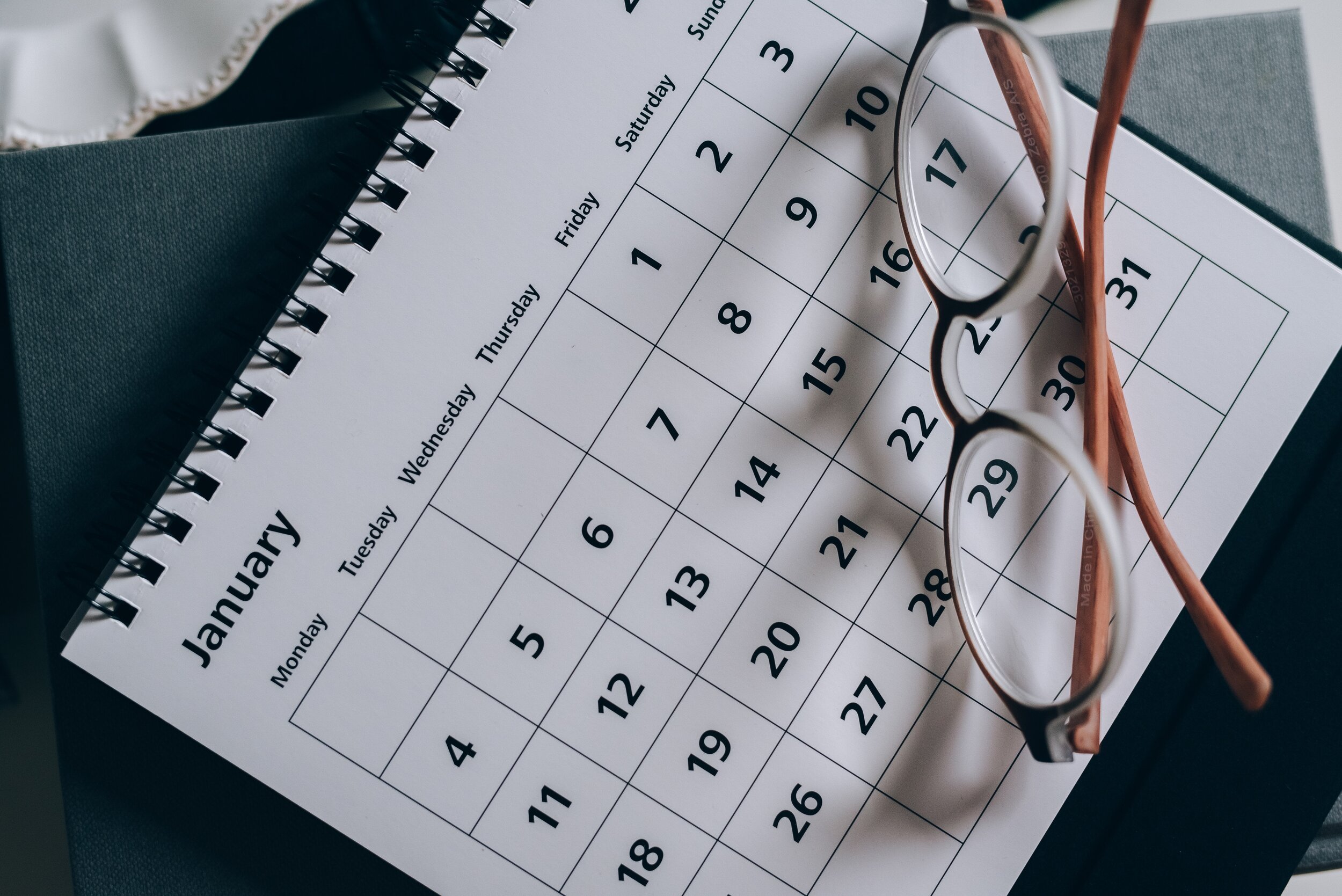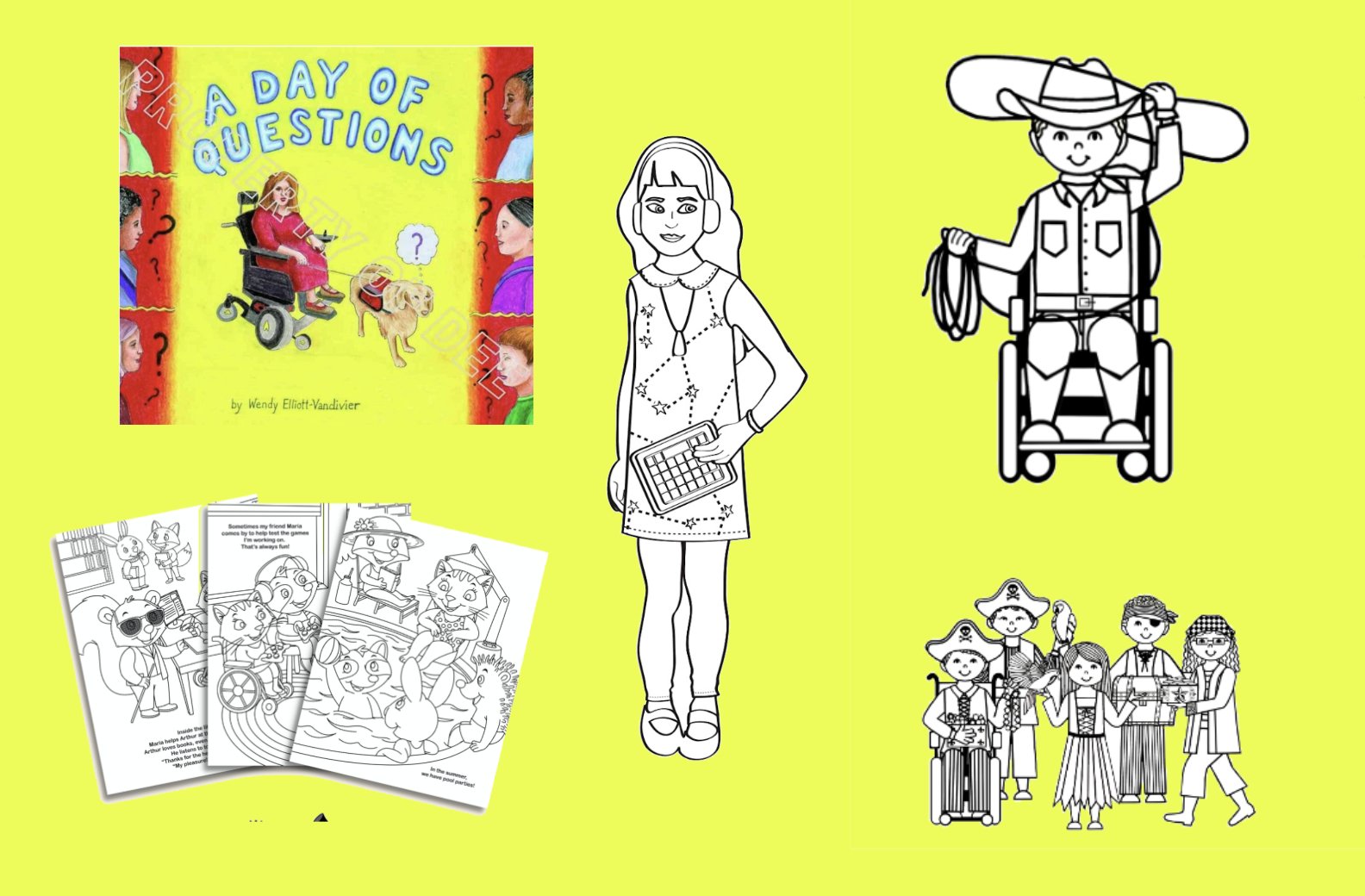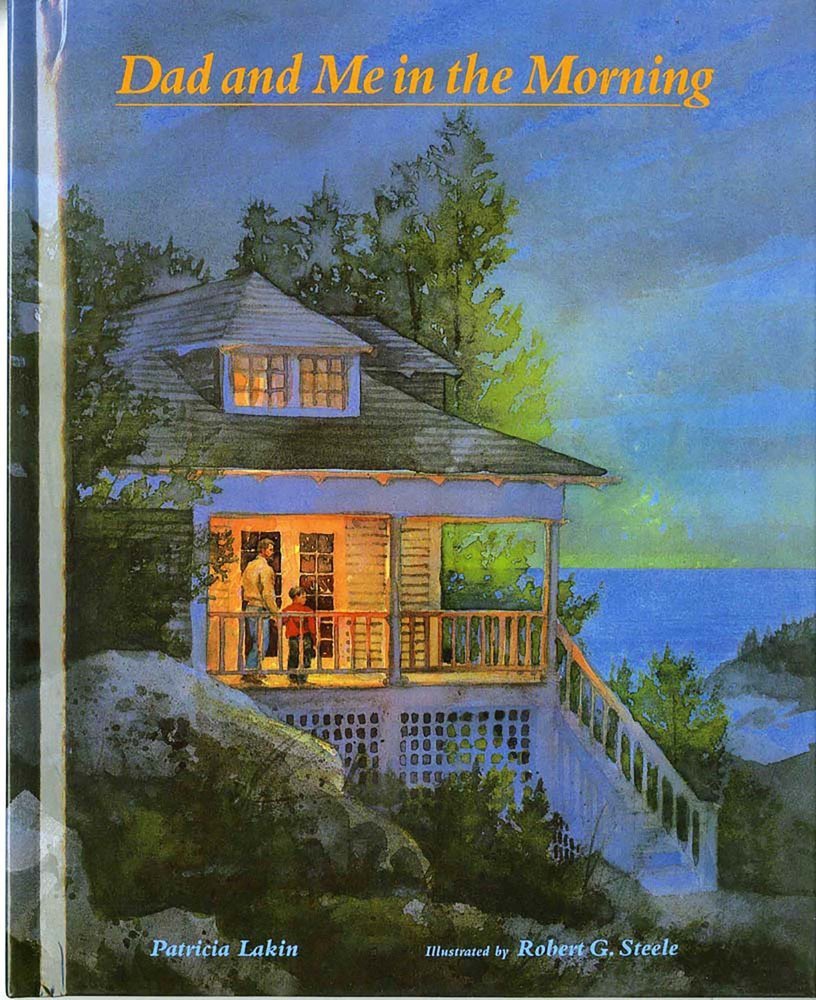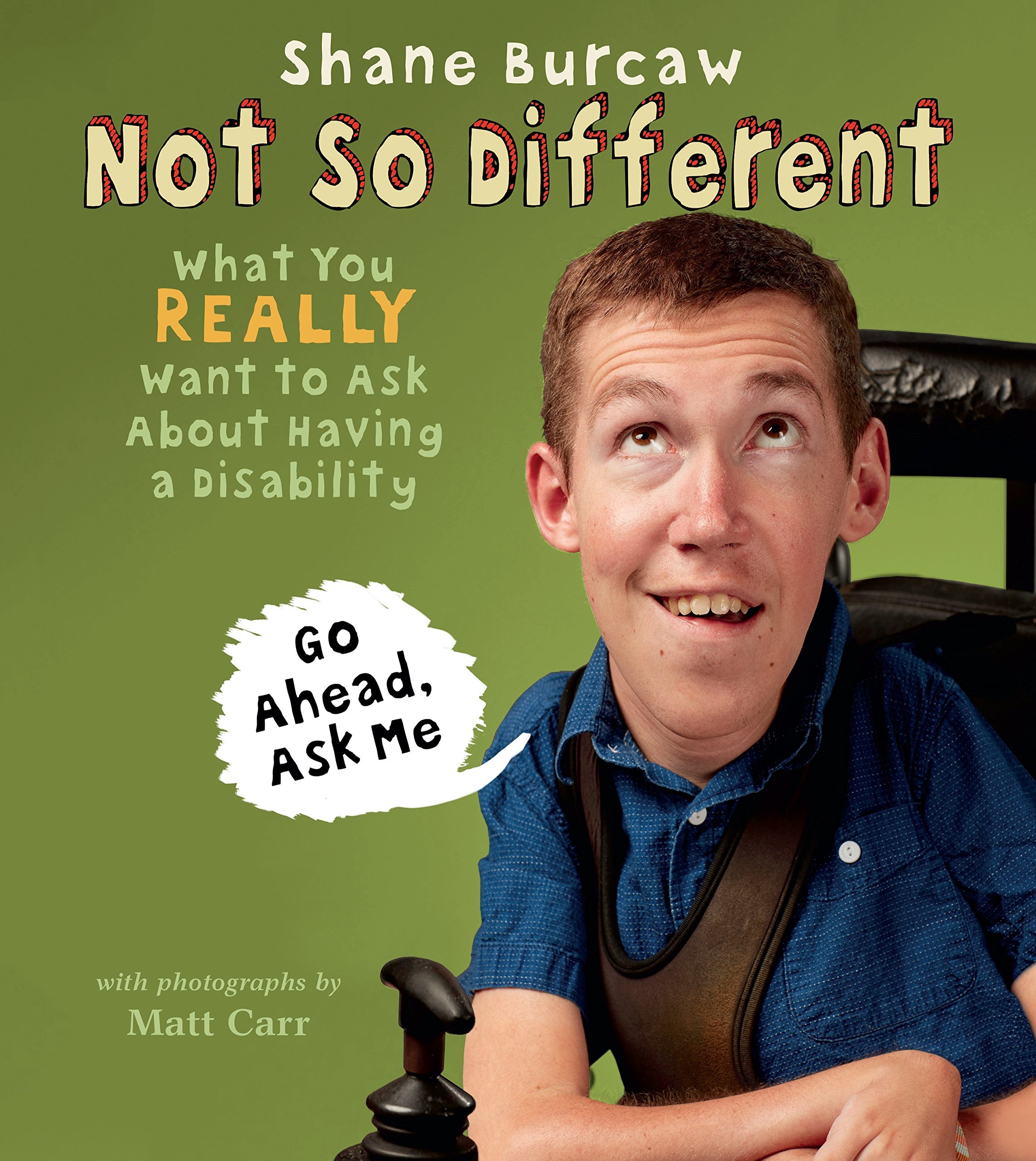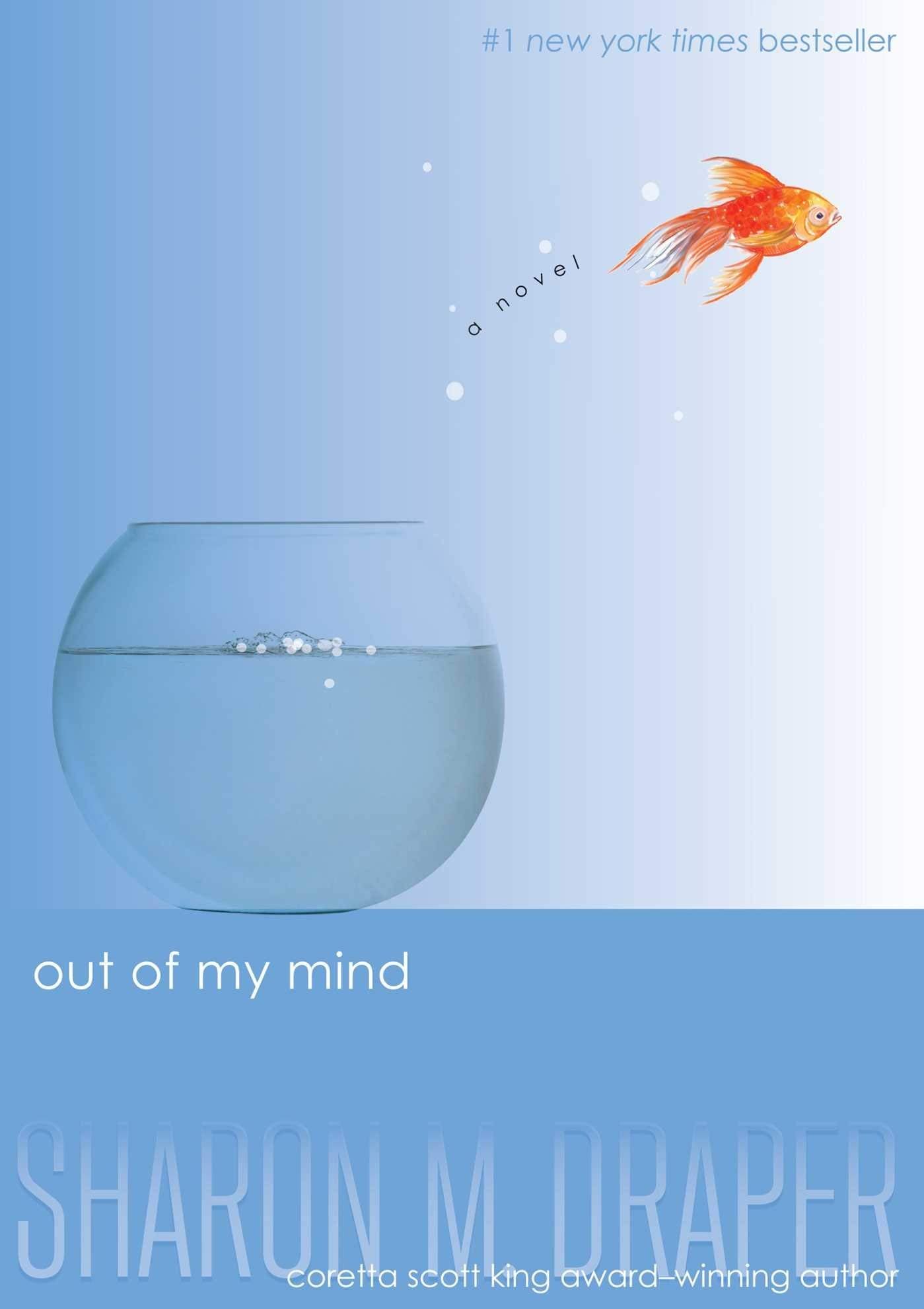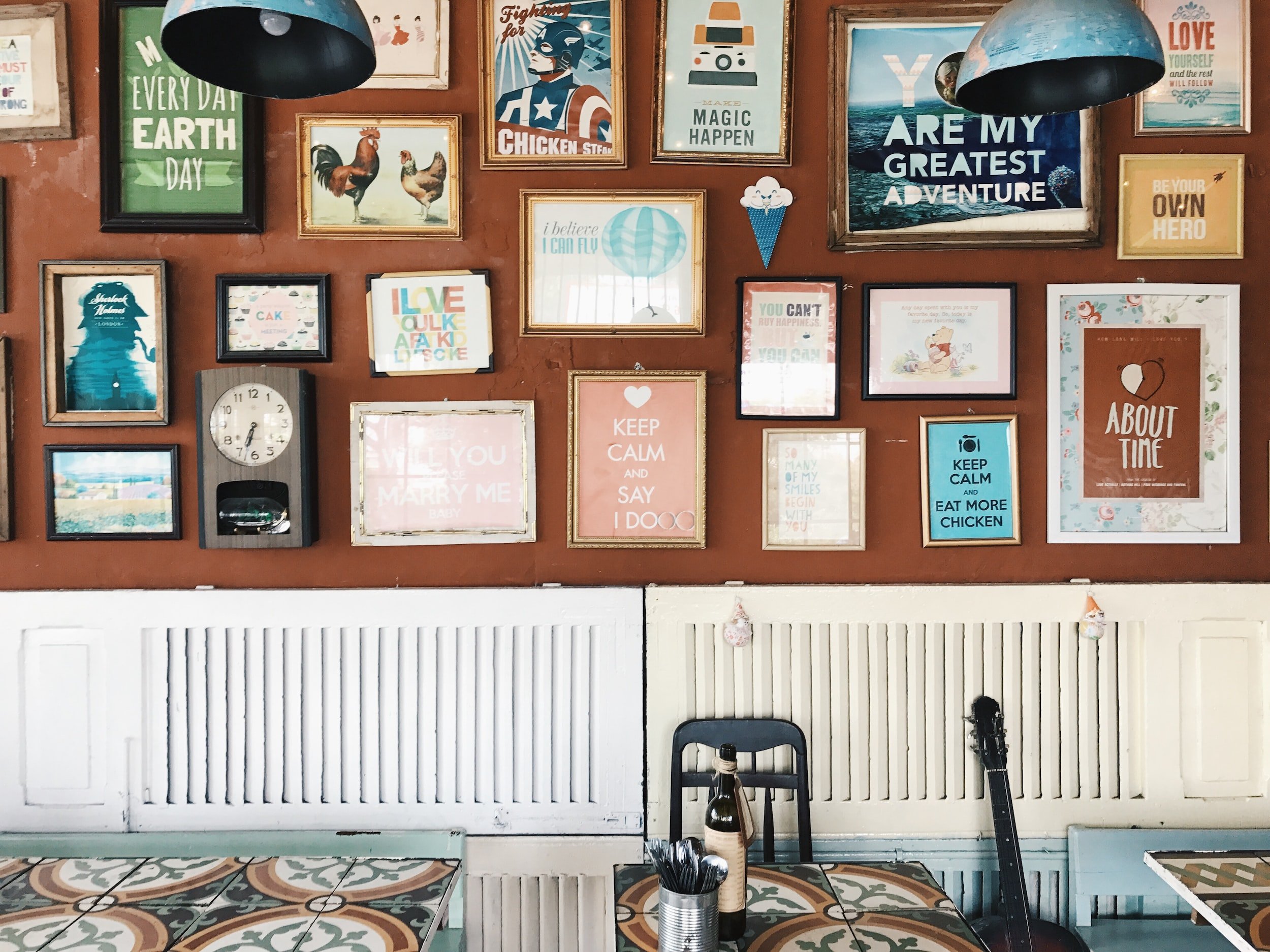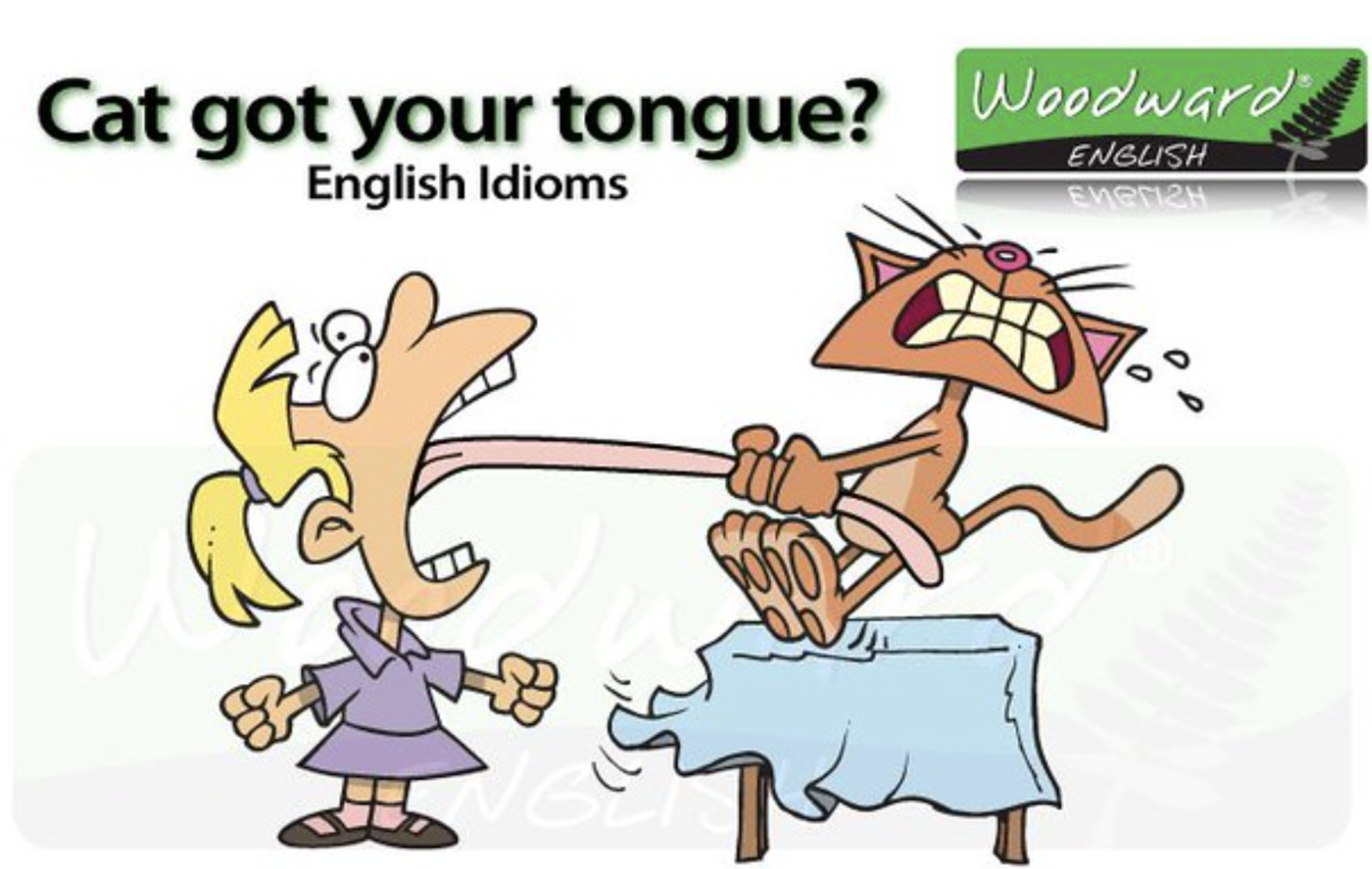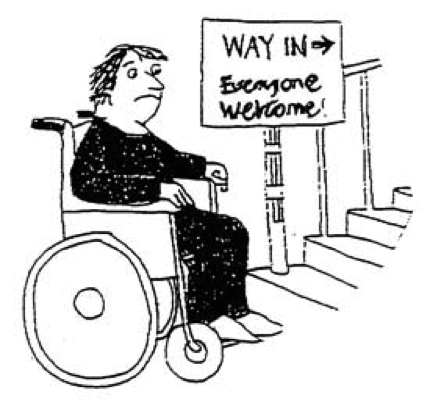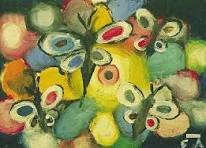5th Grade
In this lesson students will learn new vocabulary words and explore important civil rights themes by reading the book “All the Way to the Top” by Annette Bay Pimentel. “All the Way to the Top” tells the childhood story of Jennifer Keelan-Chaffins, who climbed all the way to the top of the stairs of the US capitol in 1990 to encourage congress to pass the Americans with Disabilities Act (ADA). Jennifer has cerebral palsy and became famous for the photos taken of her while climbing the stairs without a wheelchair at just 8 years old. The book tells the story from her perspective and covers how she felt she was not treated equally in her community and how she and other activist worked to get the ADA passed.
Image description: Cover artwork for “All the Way to the Top”
In this lesson, students will consider what accommodations they can make in order to be more inclusive of their peers with disabilities.
Image description: Photo of cake, birthday hats and Happy Birthday banner
In this lesson, students will be invited to research a famous Black Disabled person, either from history or modern day. Students will work in groups or individually to research their assigned person and create a final project in a creative format. Students will then present their findings to the class.
Image description: Photos of 6 famous Black Disabled people: Harriet Tubman, Tom Wiggans, Fannie Lou Hamer, Maya Angelou, Wilma Rudolph, and Harry Belafonte
On the YouTube page linked you will find a playlist with dozens of read a loud videos of books that we believe will add opportunities to incorporate disability representation in natural, positive ways to your class.
Image description: colorful books on a dark bookcase
In this lesson, students complete grade-appropriate math problems using facts and figures from Rick Hansen’s Man In Motion World Tour. Students will examine mathematical problems evolving out of the day-to-day challenges of Rick Hansen’s Man In Motion World Tour. Students will apply multiplication and division skills to real-life math problems. Students will apply conversion skills to real-life math problems.
Image Description: Logo of Rick Hansen Foundation.
A calendar of events that recognizes various days (and months) is an easy way to bring the conversation about disability into your classrooms and schools. Including discussion of disabled people throughout the year sends a message to all that disabled students are recognized and valued as a part of the education community.
Image description: calendar page tilted at an angle, reading glasses rest on the bottom corner of the calendar
Including coloring pages and artwork in lessons (some of these allow you to use as clip art) that includes disability representation furthers the goal of regularizing disability by seeing it and offering opportunities to learn and ask questions.
Image Description: small images of the coloring books on a yellow background
Summary:
In this lesson, students will look at four different characterizations of autistic children in contemporary media. They will watch excerpts or videos featuring the characters, read about the characters, and study how they were created. They will then fill out an evaluation chart to analyze the different depictions. They will have a group discussion as a class and write a reflective response.
Issues considered will include: character’s role within the show/movie; who was involved in writing/creating the characters; what public response has been; and so on. The lesson will conclude with a group discussion and students will complete a journal-style piece of writing as an exit ticket.
The characters that the students will learn about are:
Julia from the television show Sesame Street;
Pablo from the television show Pablo;
the main character from a Pixar short called Loop;
Carl, from the show Carl the Collector.
Image Description: Upper left quadrant is Julia, a muppet with yellow skin and orange hair. Upper right quadrant shows the main character from Loop, a girl with brown skin and dark hair who is reaching with her hands to touch reeds. Bottom left quadrant shows Pablo, a hand-drawn boy with light skin standing on a green hill with a rainbow behind him. Bottom right quadrant shows Carl, an illustrated raccoon wearing an argyle sweater.
This lesson revolves around the book Dad and Me in the Morning by Patricia Lakin. The book tells the short story of a boy and his dad getting up early to see the sunrise. The book is unique because the boy in the story is deaf and the book shows the different ways he and his dad communicate. It is a great example of how the disabled perspective can be brought to a story that most children can relate with. In this lesson the teacher will read the book page by page and stop on each page to have students figure out all the different ways the boy and his Dad are communicating. The students will compete to see who can find the most ways.
Image description: Cover art from “Dad and Me in the Morning” book
As our friends from Engaging America state, “Primary sources … can provide entry points and deepen exploration into historical events. Primary sources add immediacy, such as the faces in a photograph, the emotional tone of a drawing or song, or the complex look of a handwritten document. Documents from multiple points of view can illuminate conflicting ideas and events. Varied media, including maps, oral histories, published reports, and graphs offer many options for connection and investigation”.
We share these collections or primary sources as tools to continue introducing disability into the conversation from natural perspectives, using disabled people to tell their own stories whenever possible.
Image Description: Article from Dallas Times Herald, Wednesday, January 14, 1986 in section “Community Close-Up” titled “Police on sidewalk wheelchair ramps changed”
Full image description can be found at: https://adaptmuseum.net/gallery/picture.php?/451/category/16
In this lesson, students will be exposed to the artwork of Stephen Wiltshire. Wiltshire is from Britain and known for his large-scale detailed drawings of cityscapes. After learning about Wiltshire, who is autistic, students will have the opportunity to draw their own cityscape, inspired by Wiltshire’s art. For an extra geographic element, they can write facts about their city and create a bulletin board display. They will also consider how Wiltshire is often most widely described as a savant/genius, and how these words can create challenging stereotypes, both for the autistic community and for artists. For both, these words set up unrealistic expectations about who autistic people are/can be, and what art is/can be/how much training and practice is required to be an artist.
Image Description: Photo from behind a person wearing a dark jacket and a cap with headphones that is drawing on a large, detailed cityscape illustration. The drawing appears to be a bird's-eye view of a city with numerous buildings and streets.
Lesson Summary:
Lesson 1 is essential to introduce study of disability. Lesson 2 integrates disability into study of immigration. This lesson could also stand alone, or it could support a larger immigration unit. Lessons 3 & 4 work together but could also work separately. All three lessons can be taught in one grade or introduced over multiple grades.
Image Description: Emerging America logo above text that reads “Grades 4-5: Disability, Citizenship, and Civil Rights” above a black and white photo of George Veditz presenting Preservation of the Sign Language in American Sign Language. c. 1913
Students will read Not So Different: What You Really Want to Ask About Having a Disability by Shane Burcaw and consider what it means to have a disability, what inclusion means and how to create a more accessible world.
Image description: Cover for the book “Not So Different: What You Really Want to Ask About Having a Disability”
In this lesson, students consider how people communicate when they do not speak a common language. The Chilmark Deaf Community serves as a case study to engage with the wide variety of languages spoken on the Island (presently and in the past). From 1694 to 1952, Martha’s Vineyard - and specifically the towns of Chilmark and West Tisbury - had an unusually large population of people with hereditary deafness. As a result, the residents of the Island developed a local dialect of sign language, used by hearing and deaf people alike, allowing the Deaf community full and unbiased integration into Island society at large. Scientists and researchers studying the causes of deafness took great interest in Martha’s Vineyard because of deafness’ prevalence there.
Image Description: A mural with 4 simplistic cartoon-style characters drawn in black on a light tan background using sign language, movements are shown with arrows. There is foliage at the bottom and a brick wall at the top of the photograph.
The students will learn how to use a reading journal to aid their exploration of a biography “The Spy with the Wooden Leg: The Story of Virginia Hall” which will be read as a class and individually. This reading will be slow in order to help support students’ discovering how to read, process, and reflect upon biography in the form of a chapter book and use this information to enrich their study of History. Many aspects of this lesson are flexible and can be adapted to the needs of your students.
Some themes of war may be difficult for some students, it is recommended that no new difficult content be introduced on a Friday or before a long break so that the class can have the support they need as they learn about these difficult themes.
Image Description: cover of the book “The Spy with the Wooden Leg: The Story of Virginia Hall By Nancy Polette”
In this lesson, students will learn about the paintings of Mary Duffy, a multidisciplinary artist from Ireland. Mary paints expressive landscapes, often inspired by the seashores. In this lesson, students will review her paintings, and be invited to create 2 pieces of artwork inspired by different elements of Mary Duffy’s practice. One will be done in the classroom, and a second will be done in nature, with direct observation (this may be assigned as homework, depending on the weather). Students will also be invited to reflect about issues of accessibility related to nature exploration and disabled people.
Image Description: A photo of Mary Duffy painting a canvas at the beach. She is seated, wearing a red dress, using her feet to paint the canvas in front of her on a short easel. The text “Expressive Landscapes: The Art of Mary Duffy” is at the top of the image.
In this lesson, students will learn about the art of Maud Lewis, a prolific Canadian folk artist who lived in rural Nova Scotia (Eastern Canada, near the Atlantic Ocean), and worked in the mid-20th century. She is now believed to have been born with juvenile rheumatoid arthritis, but it was not diagnosed or treated in her lifetime. Students will learn about her artwork, rooted deeply in the place where she lived, and have the opportunity to keep a sketchbook for a week, and create a painting in Maud Lewis’ style that reflects their own local world. Students will also consider the complex intersections between disability, poverty and the arts that are embedded in Maud’s life story.
Image Description: a painted clam shell that features a red birdhouse in the center, surrounded by colorful flowers and two blue birds on either side. The shell is mounted on a wooden background. The artist's name, "Maud Lewis," is visible on the shell.
In this lesson, students will learn about the paintings of Yayoi Kusama, an artist from Japan who is world-renowned for her immersive rooms and graphic paintings. Kusama lives in a supportive facility for people who live with psychiatric conditions, and has done so since the 1970s; the exact nature of her mental health support needs has not been disclosed to the public, but she has described experiencing hallucinations, anxiety, and pain in interviews. As part of this lesson, students will learn about different housing types for people of all abilities. Students will also be able to create either a painting or an infinity room (assignment can vary depending on your classroom materials).
Image Description: A large pumpkin sculpture sits on the grass, yellow and covered in vertical rows of black polka dots in varying sizes
Students will consider the icon of the person in a wheelchair, the “International Symbol of Access.” They will learn about its history and the recent Accessibility Icon project that updated it. They will also consider other disability symbols, both in the US and internationally (such as symbols that indicate Deafness, Hidden Disabilities, and Autism, and how they are used/not used in other countries).
Art extensions include photography assignments to document iconography in their school and in everyday life and new symbol-making where students make new symbols that could replace the wheelchair, and be more inclusive.
Geography extension is a study of symbols and use/news about them in other countries. Students will be assigned a country to study either individually or in groups, and explore disability iconography in that place. This activity would work well as a library-based extension as well.
Image Description: a white and blue reserved parking sign with a traditional wheelchair accessible symbol and a clear backed sticker of the new Accessible Icon in red pasted over it.
Out of My Mind is narrated by a girl with cerebral palsy who's very intelligent but unable to express herself by speaking or physically. When Melody is integrated into some general classes at school, many kids are purposely mean; others, including teachers, are cruel through their assumptions that Melody is incapable of understanding them. With the help of her parents and some supportive friends and teachers, Melody acquires a machine that allows her to communicate better than she ever has before (Common Sense Media). At last Melody has a voice… but not everyone around her is ready to hear it (Draper, 2010). This book discussion guide can also be adapted into a full assignment if that is more applicable for your student group.
Image description: Cover from the book “Out of My Mind”
Portrait of the Whole Person is a curriculum for elementary school students designed to teach students how disability rights fit into the broader civil rights movement, to perceive disability as a reflection of societal views of differences, and to treat people with disabilities with respect and dignity. It contains four distinct lesson plans comprised of three in-class instruction lesson plans and one lesson plan governing the research and writing of a biographical sketch and creation of a portrait of a notable person with a disability. It is also complete with a graphic organizer, rubrics, a power point, and a list of references students can use for research.
Image Description: Disability Rights Washington logo with “Portrait of a Whole Person Curriculum Overview” written below and drawings of 3 different people in colored pencil.
Posters with disability representation. Most are free to download, though some can be purchased as well.
Image description: Corkboard wall with many signs of assorted size and colors.
In this 3 part lesson, students will learn how to recognize idioms and explain the difference between literal and figurative language
Students will determine what assumptions are made in certain situations and text using literal and figurative language.
Image description: Graphic showing a cat pulling on a child’s tongue with the text “Cat got your tongue? English Idioms”
Students will read/watch the story of The Sneetches by Dr. Seuss. Students will think about prejudice and bullying. Students will learn that differences are not a bad thing and that no one should have to change to please others.
Image description: Cover art from the book “The Sneetches”
This links to our Social Model of Disability resources page which contains videos and examples of how to introduce and teach the Social Model of Disability.
Image description: Illustration of a person seated in a wheelchair at the bottom of a set of stairs. There is a sign at the bottom of the stairs pointing to the stairs that says “WAY IN Everyone Welcome!”
Students or teachers read Thukpa for All by Praba Ram and Sheela Preuitt and consider how the story relates to the social model of disability.
Image Description: Cover of Thukpa for All is light yellow/orange divided in 7 panels. 3 on left and 3 on right have characters from the book. The top center panel has the title of the book and a bowl of noodle soup with steam rising from it. The bottom center panel has the names of the authors and illustrator.
By experimenting with stenciling, one technique Eref Aramagan uses to create his Art, the student will become aware of a way by which visual art can be created by use of touch.
Image Description: Painting of brightly colored butterflies made using stencils by Eref Aramagan
Using the book "We Want to Go to School," students will learn about the segregation of students with disabilities in the school setting. They will learn about the barriers that prevented students from attending school and the progression and processes to challenge and remove those barriers.
Image Description: Cover of We Want to Go to School! The Fight for Disability Rights by Maryann Cocoa-Leffler & Janine Leffler. The cover artwork shows five children behind a table that has papers and a gavel on it.
In this lesson students will read a 2-page graphic novel format story about the Gang of 19 and “We Will Ride” action, and how they fought for equal rights for the disabled.
Image Description: Graphic Novel cover showing protesters in purple black and off white on a green background with the title “Colorful History Comics #31 We Will Ride” underneath the comic.
Students or teachers read or watch “Winnie the Witch” by Valerie Thomas and Korky Paul and consider how the story relates to the social model of disability. Students can apply what they learned about the social model, make connections, and identify events in the story where it was used.
Image Description: cover of the book "Winnie the Witch" which showed Winnie the Witch tripping over a black cat on the stairs.

